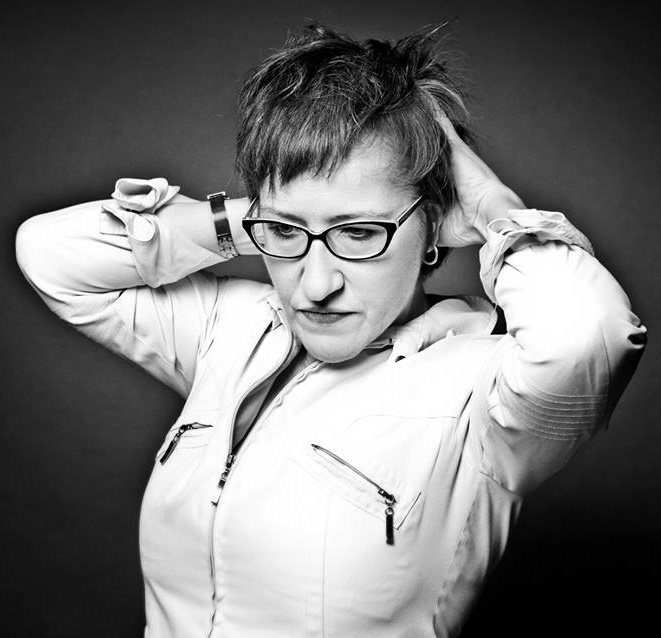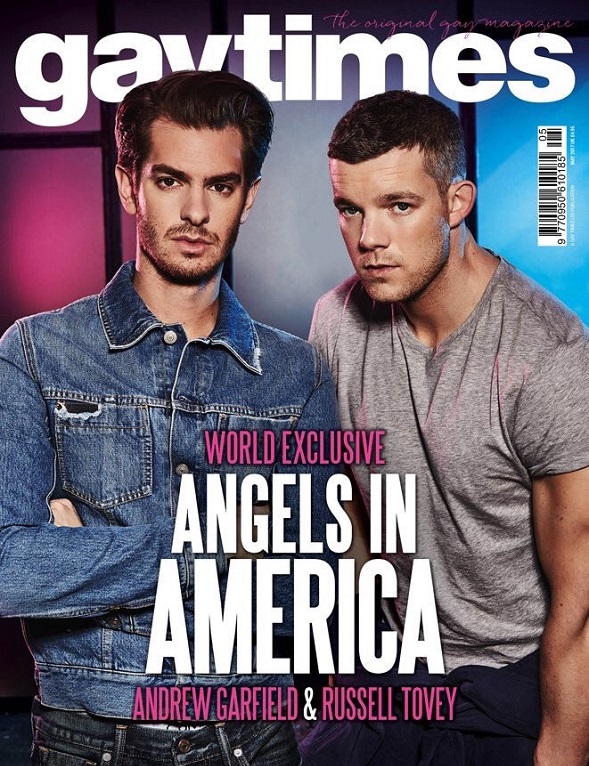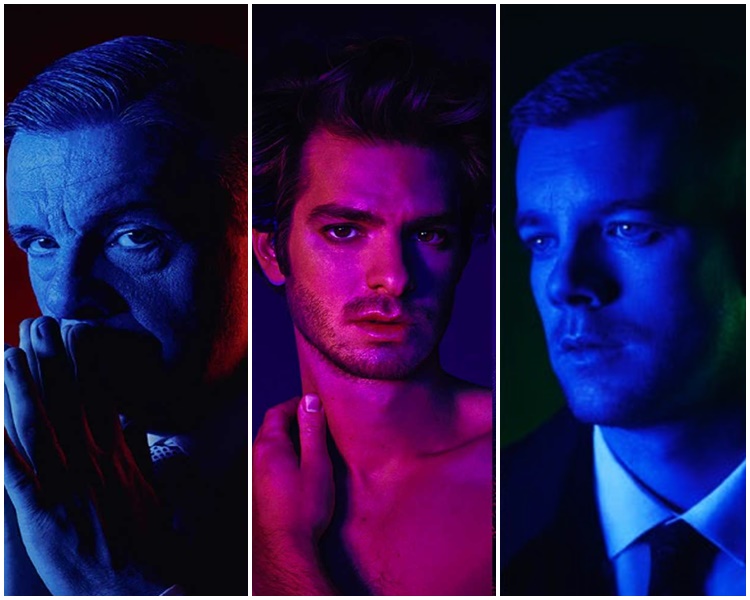Cinema Bíó Paradís will send direct from a performance of Angels in America in The National Theater in London this August (part 1 shown on August 18 as well as the 19th and then part 2 on August 25 and 26th). It’s a star-studded production which has gotten rave reviews and will be a treat for theater lovers in Iceland.

It’s not the first time Angels in America will be seen in Iceland though, in 1993 The City Theater of Reykjavik (Borgarleikhúsið) staged it’s own production of the first part of the play, which was a very bold move in Icelandic theater at that time. The director was Hlín Agnarsdóttir and she says that people did not really want to talk about the subject matters of the play back then as being gay was still a taboo in Iceland.
GayIceland contacted Hlín and asked her about the production and it’s reception in 1993. Whether it was a controversial choice for one of the two biggest theaters in Iceland to stage such a ‘flammable’ play?
“You bet! Eiríkur Jónsson, the one and only yellow press journalist, interviewed me on the TV-station Stöð 2 and tried the whole time to put me off track with questions about this horrible homo play and weather it was not awfully rude to offer such garbage to Icelandic audience. I don’t remember how the theater critics reviewed it but I do remember that Jón Viðar Jónsson, critic for the national TV-station (RÚV), hissed with indignation talking about the play on TV. I also remember that many of my friends were not eager to discuss the content of the play with me, thought it was far-fetched and difficult to handle. The production in Borgarleikhúsið was only the third production of the play in the world (after the U.S. and the U.K.). A very bold decision made by the then manager of the theatre, Sigurður Hróarsson, and it’s dramaturg, Páll Baldvin Baldvinsson. An even bolder move was getting me to direct it, but I got recognition as a female director after I directed another bold play Horrible happiness by the Swede Lars Norén at theater Alþýðuleikhúsið in 1992 and after that the doors opened.”
“(the play) tackles witch hunting in many senses of the word. Today the witch hunting goes after people of other origin … gay or in any way representing what Trump, Putin and Erdogan are most afraid of.”
What did the actors think? Were they shocked by the play’s subject?
“Yes, at first, but that did not last as I started the rehearsal period by establishing a week-long academy where the actors attended lectures in the theater in the morning with openly gay lecturers; the chairman of The National Queer Organisation (Samtökin ’78) and men with HIV. Besides some closet gays that knew a thing or two for example about Roy Cohn (an American attorney with ties to Joseph McCarthy and Donald Trump, who is part of the play) and his track record. One of the lecturers was a professor of political science and he declared that one could hardly call Roy Cohn a usual gay guy because he was not a ‘receptive gay’, as he called it. He did the fucking, he was not fucked. We also had a great lecture from a professor of religion and the history of religion who introduced us to the religious aspects of the play, the religion of Jews and Mormons, which was as foreign to Icelandic actors as the gay world.

The actors were allowed to ask the lecturers anything regarding the play, but I forbade any personal questions. Such as: “Are you gay”? At this time we did not frequently hear words as ‘gay’ or ‘trans’ in Icelandic, the Reykjavík Pride parades had not yet started and it was still taboo to be gay in Iceland. Only one of the actors was openly gay so it was necessary to educate us all in these gay matters and in the end I became the gayest of them all.”
How was the production received? “As I said before I don’t really remember in detail what the critics said, but I think it was all a bit hush-hush. People did not really want to discuss this play, not even the people in the theater, this was a too big bite to swallow. The gay people I knew complimented me, at least the ones who had come out and dared to talk about it. People just didn’t really know how to talk about the production which makes sense as it is very complicated, both the subject where several stories are told simultaneously and some of them happen in reality, others in dreams, and also in form as it consists of 22 scenes and a multitude of characters. The scenes are very short and take place in a variety of places so the manuscript looks more like a film than a play.”
Do you think the production of Angels in America helped open up the discussion about gays and HIV in Iceland?
“I have no doubts about that. But as it all happened BI (before internet) the discussion that the traditional media did not partake in were not as obvious as now and one did not necessarily hear it. If there was a discussion it was not official.”

Was there no discussion about HIV at the time?
“Yes there was, but very hushed up as everything else regarding the taboo that being queer was at that time. That changed around the same time as we staged Angels in America and the Directorate of Health held a play writing competition in 1993 and asked especially for plays that tackled aids, as it was called then. I won that competition with the one-act play Alheimsferðir Ernu, which was about the danger of HIV among straight people. The Directorate of Health wanted to look at HIV from as many sides as possible, not limit it to looking at the disease in gays and drug addicts.
A young Icelandic actor, Gunnar Rafn Guðmundsson, had died from the disease in May 1993 and of course that affected the discussion about the danger, especially within the theater world.”
The play premiered in 1990 and was shocking and relevant at that time, but how do you explain it’s success in later years both as a television mini series and now in this production at the National Theater in London? Is it still as relevant?
“I think it is obvious now, not least when we see Donald Trump becoming the president of The United States, but his lawyer and main advisor was no other than aforementioned Roy Cohn who died from aids in 1986 but always denied having the disease. He was a Jew who persecuted Jews, one of the primus motors in the persecutions of communists in the McCarthy area, closet gay from hell, satanic in all his lies.
“Angels in America is about the lies in life, politics and culture, the lies that now are categorised as alternative truth. But it’s not just the situation in the U.S. today that calls for this relevance of Angels in America but also the persecution of gays in other parts of the world.”
Angels in America is about the lies in life, politics and culture, the lies that now are categorised as alternative truth. But it’s not just the situation in the U.S. today that calls for this relevance of Angels in America but also the persecution of gays in other parts of the world, in Russia, Turkey, and some other countries, not to mention Chechnya and Iran, where gays are right out executed. Angels in America is relevant and actuel in the same way as Arthur Miller’s The Crucible, as it tackles witch hunting in many senses of the word. Today the witch hunting goes after people of other origin, skin color, Muslims, gay or in any way representing what Trump, Putin and Erdogan are most afraid of, and I would think that it has do do with these guys ‘homophobia.”
Main photo: The production at The National Theater in London is a star-studded production (with actors such as Nathan Lane, Andrew Garfield and Russel Tovey) which has gotten rave reviews.


